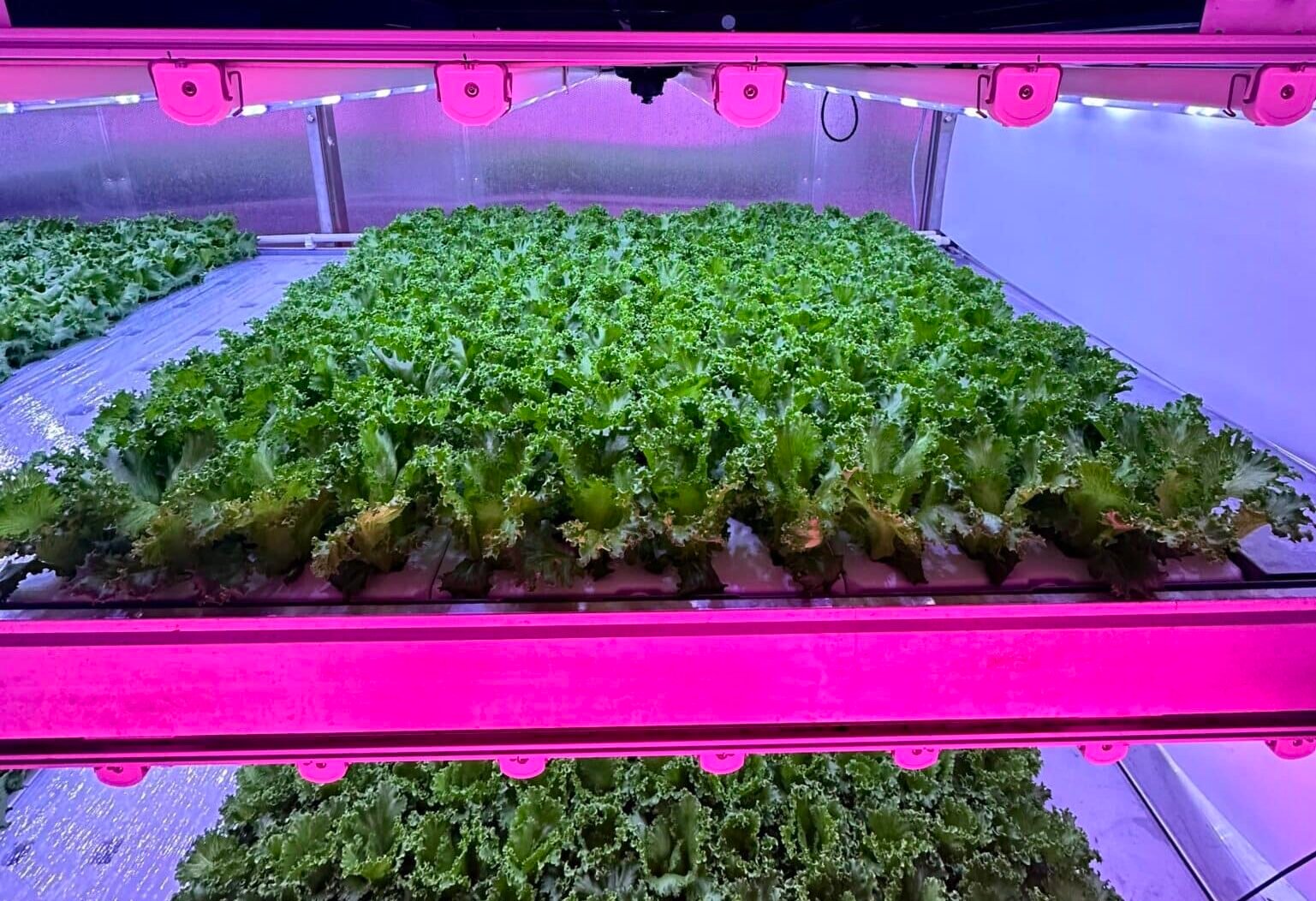Key Takeaways
- Signify, through its Philips GrowWise Research Center, has identified optimized light and temperature strategies that double the yield of crispy lettuce in vertical farming conditions.
- Trials with modern cultivars such as Crismina, Finstar, and Hydrolique showed that new varieties tolerate higher light and warmer temperatures without tip burn.
- The research focused on balancing light intensity and temperature—known as the Radiation-Temperature Ratio (RTR)—to achieve optimal growth, quality, and shelf-life.
- Results showed up to 50% higher yield from increased light levels, 33% higher yield from higher temperatures, and improved shelf-life under all tested conditions.
- Findings demonstrate how Signify’s horticulture lighting solutions can help growers make lettuce production more efficient, consistent, and profitable.
Signify Explores Optimal Conditions for Crispy Lettuce Production
At its Philips GrowWise Research Center, Signify conducted extensive trials to determine how lighting and temperature strategies can help growers produce crispy lettuce with higher yields, better quality, and longer shelf-life.
Crispy lettuce—long considered a challenging crop for vertical farms due to its sensitivity to tip burn and uneven growth—showed significantly improved results when grown under optimized light and temperature conditions. The study demonstrates how the right combination of advanced LED lighting technologies and climate control can transform indoor lettuce cultivation into a more reliable and scalable operation.
Delving Into Light and Temperature Balance
The Philips GrowWise team tested six light levels (ranging from 180 to 480 μmol·s⁻¹·m⁻²) and three temperature ranges (21°C to 27°C) to explore the interaction between light and heat. This relationship, referred to as the Radiation-Temperature Ratio (RTR), determines how efficiently plants use available light for photosynthesis and growth.
A high RTR (strong light, lower temperature) leads to higher sugar accumulation in the leaves, which can enhance taste and shelf-life. A low RTR (lower light, higher temperature) speeds up growth but may reduce plant resilience. The study found that optimizing both factors allowed plants to balance rapid growth with the development of storage compounds that contribute to freshness and quality.
Key findings include:
- Up to 50% yield increase from higher light intensity at the same temperature.
- Up to 33% yield increase from higher temperature at the same light level.
- Doubling of total yield when both light and temperature were optimized.
Shelf-life lasted at least 13 days under all test conditions, and sugar levels increased consistently with higher light exposure.
Signify’s Horticulture Lighting Translates Research into Practice
The trials highlight how Signify’s horticulture lighting solutions can help growers fine-tune their production environments to maximize output while maintaining crop quality. The research also confirms that modern crispy lettuce cultivars are now robust enough to handle higher-intensity growing conditions.
“By combining the latest advancements in plant genetics with precise control of light and temperature, we’ve shown that crispy lettuce can become a consistent, high-value crop for vertical farms,” said Jarno Mooren, Plant Specialist at Signify.
The findings demonstrate how Signify’s Philips horticulture intelligent lighting systems can help growers apply these insights to commercial operations—enabling them to optimize energy use, improve yields, and deliver lettuce with longer shelf-life and superior taste.


